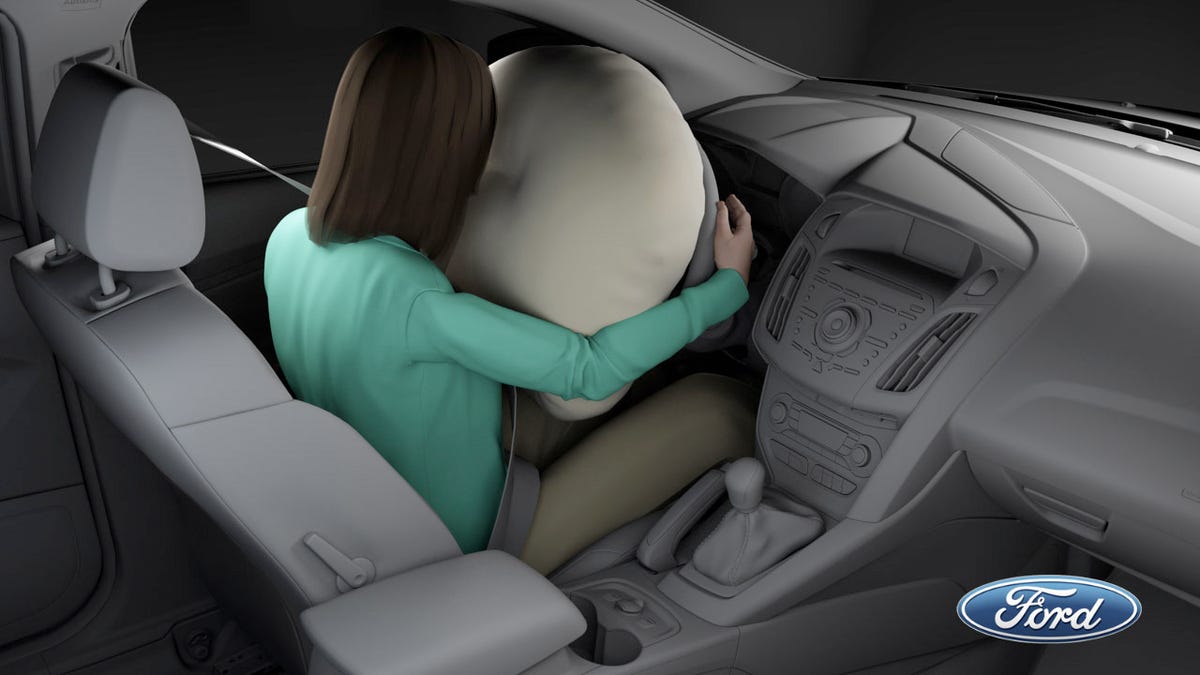Ford upgrades airbags in 2012 Focus
These next-generation airbags include features that modify the amount of air pressure deployed in the airbag based on the seat occupants size.

Most cars are more or less one size fits all, even though its occupants are not. While adjustable seats, pedals, and steering wheels address some of the size differences, there's aren't a lot of accommodations when it comes to the safety features, except to recommend that if you're short you might be better off sitting in the back seat where airbags are less likely to break your face.
Today Ford announced that it will be adding adaptive airbags in the 2012 Ford Focus. These next-generation airbags include features that modify the amount of air pressure deployed in the airbag based on passenger size. On the driver's side, the company also added a second tether that contours the front airbag's shape to protect the rib and chest better.
Ford has already been using seat-track sensors to determine with how much force to deploy the driver-side front airbag, but starting in the 2012 Focus it will be adding that technology to the front passenger side as well. Basically, the closer the passenger seat is to the dashboard, the smaller the restraint control system assumes you are, and the system lessens the pressure in the airbag accordingly.
The carmaker is also adding shoulder vents to the side-impact airbags to control the pressure. But rather than using sensors to adjust the pressure, the occupant's body controls how much air escapes through the vents. When an airbag deploys with this technology, the shoulders of taller occupants physically block the vent, which lessens the amount of air that escapes, and increases the pressure. However, smaller drivers' shoulders won't block that vent, and more pressure is released.
"This is our most advanced airbag system ever in a Ford car, and is designed to enhance protection for front occupants in the most common types of crashes," said Sue Cischke, Ford's group vice president for sustainability, environment, and safety engineering in a news release. "Each of these airbags uses innovative technologies to help customize airbag protection to the occupant."
This new technology will particularly benefit elderly drivers who are at higher risk of injury than younger drivers because of the nature of collision forces, according to the company's news release, which is why these airbags are debuting in the 2012 Focus. The company is actively pursuing the growing boomer market who may want to trade-in their people mover for a smaller car. Ford plans to expand the advanced safety feature to other vehicles in the future.

